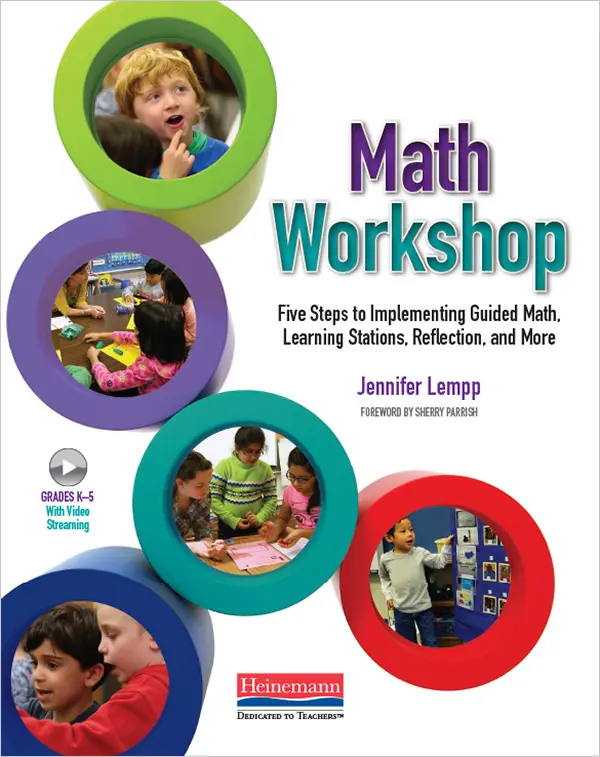
Use This Book to Support You on your Math Workshop Journey
Math workshop is a model of instruction and a philosophy of how math class can be structured to maximize opportunities for differentiated instruction, formative assessment, and student-centered learning.
The teacher chooses from the following three math class structures, as detailed by Jennifer in her book, depending on her assessment of the needs of the students and the content being taught each day:
- Task and Share
- Focus Lesson, Guided Math, and Learning Stations
- Guided Math and Learning Stations
Every class starts with a number sense routine and ends with reflection. In between, students are involved in purposeful math tasks, either individually, in pairs, or small groups, focus lessons, guided math groups, or learning stations. As the teacher assumes the role of a facilitator, students explore and discover math ideas together.
What You Will Find in the Book:
- Insight into the “three buckets” for a highly successful math workshop: Classroom Arrangement, Routines & Procedures, and Mathematics Community.
- Twenty minilessons that support the communication and practice of expectations surrounding the workshop model.
- Three classroom-tested math workshop structures, providing practical ideas for routines, focus lessons, guided math groups, learning stations, and reflection so you can get started with math workshop in your classroom today.
- Online video clips that invite you inside K–5 classrooms for a look at math workshop in action. Seeing clips of actual teachers and students engaged in math workshop is the next best thing to observing the model in a classroom.
- Templates, tools, and ideas available in downloadable format.
5 things I noticed immediately after switching to a math workshop model:
- Students who thought they weren’t good at math or who hated math started to participate in class and even smile every now and then.
- I was able to quickly identify the students who already understood the concepts and those who still needed more time.
- I had the time in the class period to address all students - those that already knew the grade-level concepts, those that were still working on them, and those that needed some support.
- I didn't feel behind in my pacing. I had a structure that allowed me to meet the individual needs of my students without getting behind.
- I started to feel like a successful teacher of mathematics and saw the difference it was making in my students.

